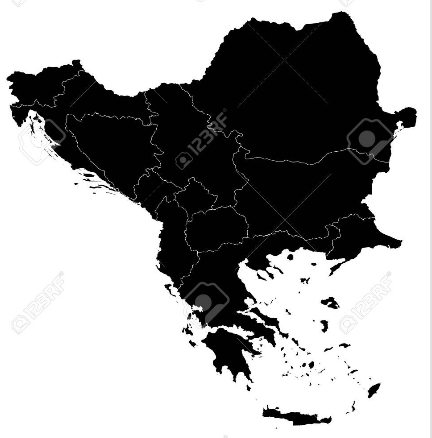Growing demand for food due to population growth, coupled with a reduction in suitable arable land, has made pesticides essential for ensuring food security.
They play a key role in both increasing agricultural yields and improving food quality – they are expected to reduce crop losses caused by pests and diseases by around 30%. As a result, their use has increased significantly in recent decades. Globally, agricultural pesticide consumption has increased from 2.8 million tons in 2010 to 3.5 million tons in 2022 – a 25% increase in just 12 years.
According to the Food and Agriculture Organization of the United Nations (FAO), pesticides are defined as "any substance or mixture of substances of chemical or biological composition intended to repel, destroy, or control pests." They are usually classified according to the type of organism they control. The main groups are: insecticides, fungicides, herbicides, nematicides, acaricides, rodenticides, and bactericides.
Agricultural pesticide consumption in the European Union (EU) accounts for approximately 13% of the global total. Although more moderate than the global trend, pesticide use in Europe is also increasing. It has risen from 402,229 tons in 2010 to 449,038 tons in 2022, an increase of 12%. This more modest increase is mainly due to stricter regulations in Europe. In 2023, 444 pesticides are authorized for use in the EU, while 954 are banned or not approved, and 43 are under evaluation.
Although pesticides have contributed significantly to increasing agricultural production, their misuse also raises serious concerns for the environment and public health.
It is estimated that less than 15% of the pesticides applied actually reach the pest they are targeting. The rest is dispersed into the environment, contaminating soil, water, and air. This poses significant risks to the environment, including poisoning of non-target organisms, loss of biodiversity, and the development of resistance in pests.
Pesticide residues can also enter the food chain through the consumption of crops and water, increasing the risk of disease in humans. These include neurodegenerative, cardiovascular, endocrine, respiratory, renal, and reproductive disorders, as well as cancer.
Wheat is one of the most important cereal crops in the world and is the main source of food for almost half of the world's population. For this reason, the SoildiverAgro project, which brings together researchers from different European countries and is led by David Fernández Calviño from the University of Vigo, has analyzed the presence of 614 pesticides in 188 wheat fields.
Ninety-three of the fields examined were conventionally farmed, while 95 were organically farmed. They were distributed across eight countries with diverse climates and soil types. 99% of conventionally farmed wheat fields had at least one pesticide. A total of 73 different compounds were found. The most common were fenbutatin oxide (insecticide) and AMPA (glyphosate metabolite), both of which were present in 44% of the samples, followed by the herbicide glyphosate and the fungicide epoxiconazole, present in 39% of the samples. Other frequently found pesticide residues are boscalid, tebuconazole, bixafen, diflufenican, and DDT metabolites, which were found in more than 20% of the samples.
The results show noticeable differences depending on the region of Europe. The continental region (Germany) recorded the highest presence of pesticide residues, both in terms of quantity (average concentration of 0.46 mg/kg) and diversity (average of 13.5 different pesticides per plot). This was followed by the Atlantic region (Denmark and Belgium). At the opposite end of the spectrum, the Pannonian region (Hungary and Serbia) showed the lowest levels (average 0.02 mg/kg per field).
A particularly worrying finding was that pesticide residues were also found in organic fields. Specifically, 35 different pesticides were found, of which only one (Spinosad) is permitted in organic farming. This shows that these pesticides remain in the soil years after the change from conventional to organic farming, as well as the transfer of pesticide residues between different agricultural fields. In addition, 31 of the compounds found were banned at the time of the study. This confirms the high persistence of some pesticides – they were still detectable more than 40 years after their ban.
The most concerning are the fungicides epoxiconazole, boscalid and difenoconazole, as well as the insecticides imidacloprid and clothianidin. In contrast, herbicides such as glyphosate and its metabolite AMPA, although widespread, pose a relatively low environmental risk.
Pesticide residues are widespread in agricultural fields across Europe and around the world. To improve this situation, it is essential to move towards a more sustainable use of these chemicals.
In this regard, replacing highly persistent and toxic compounds with less harmful alternatives – such as bioinsecticides, plant-based products or beneficial microorganisms – can significantly reduce soil and water pollution, as well as the impact on biodiversity.
Another complementary approach is to promote agricultural practices that improve soil health and the natural resistance of crops, such as crop rotation, reduced tillage, cover crops, and certified organic farming. These measures not only help reduce the need for pesticides, but also facilitate the degradation and elimination of existing residues in the soil, limiting their transfer to other ecosystems and the food chain. Therefore, the combination of strict regulation and the implementation of good agricultural practices offers a promising way to minimize the risks of pesticides without sacrificing agricultural productivity. I BGNES
Analysis by Laura Hood in "Conversation"

 Breaking news
Breaking news
 Europe
Europe
 Bulgaria
Bulgaria







